The ideal body type is ever-changing due to societal shifts and major events, and women are expected to fit each alteration.
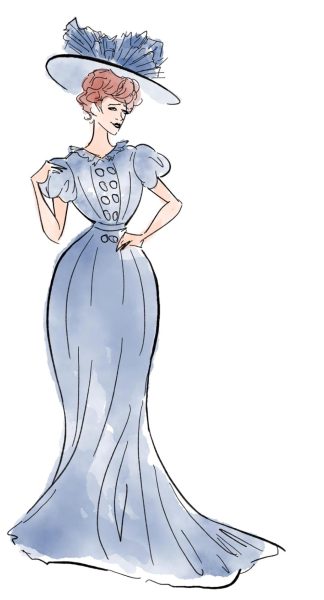
Gibson Girl
In the late 1890s and early 1900s, American artist Charles Dana Gibson illustrated the Gibson Girl who was an amalgamation of American femininity and served as a beauty standard for everyday women. The Gibson Girl was an emancipated woman who was created to be more palatable to patriarchal society than the controversial “New Woman” growing in popularity at the time. She was tall and athletic with a small waist that accentuated her bosom and bottom.
The artist based his illustration on American women he saw. “They are beyond question the loveliest of all their sex,” Gibson said in a 1910 interview with the New York Times. Despite his reference being American women, he remarked the ideal Gibson Girl did not truly exist and she was a product of American imagination. A man interested in evolution, Gibson claimed the biodiversity of the United States would lead to a woman more beautiful than any of his time.
 Boyish
Boyish
In the 1920s, women gained the right to vote, a step forward in autonomy which was mirrored by the flapper subculture and style, accompanied by a boyish body type. World War I lasted from 1914 to 1918 and disrupted American society. Returning to everyday life was difficult and old norms were deconstructed. Instead of dressing as feminine as possible, flappers opted for a boyish look, also referred to as “garçonne,” which is the French word for “boy” with a feminine suffix.
Flapper style was defined by straight and loose dresses with exposed arms designed to allow a large range of motion. The silhouette was the antithesis of the nipped waist and large breasts and hips of the Gibson Girl. It rejected American societal norms for women, as explained by Jennifer Rosenberg for ThoughtCo. Some flappers would bind their chests to achieve the flat chest necessary for the signature dresses to drape and sway.
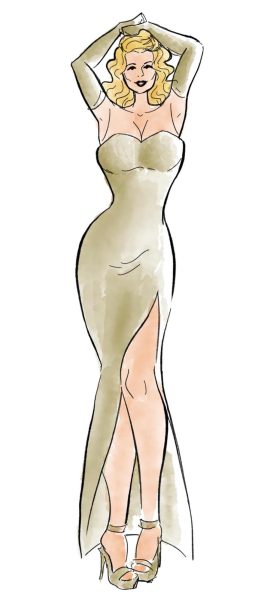 Curvy Bombshell
Curvy Bombshell
In the 1940s, the ideal body type deviated from prepubescent slenderness to busty bombshells with small waists and large breasts. The Great Depression stripped away the importance of fashion, and the reemergence of curvy dominance in society was influenced by Old Hollywood. Films offered people an escape from reality and bombshells were common centerpieces of silver screen fantasies. Stars like Rita Hayworth and Veronica Lake were used by Hollywood studios to entertain and comfort audiences during World War II.
Hayworth was a defining star of the 1940s with a signature look that was created against her will. To create the perfect bombshell, her hairline was cosmetically raised and she was consistently dressed in a sexual manner, according to Dan Callahan for Nylon. The familiar nipped waist and revealed breasts were defining characteristics of bombshells, with characters alongside them in films often commenting on them. Overt sexuality was tied to bombshells, which further sexualized the curvy body type. Hayworth is an example of a woman being forced into an ideal body type and look, which persists today with popular media and societal pressure as omnipresent influences.
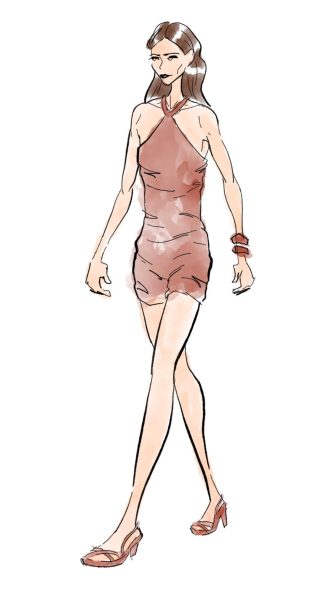 Model Thin
Model Thin
In the 1990s, a rail-thin precedent was formed which was dominant throughout the decade and into the 2000s. Curvy and boyish body types ebbed and flowed in decades prior, with a notable fitness craze in the 1980s, but the cultural impact of skinniness in the 1990s has remained pervasive amidst following decades.
Kate Moss was an icon of 90s thinness with runway and catalog prominence, notably the face of Calvin Klein’s “Obsession” perfume. Klein expressed a frustration with prior concepts of glamor and ideal body types. “I wanted someone who was natural, always thin,” Klein told Women’s Wear Daily in 2011. Despite his desire for natural women, thinness has been consistently represented alongside drug use and eating disorders, which led some to dub the body type “heroin chic.” As the modeling industry became overwhelmingly skinny and clothes became increasingly revealing, women were pressured to fit the ideal body type, which successful models struggled to maintain.
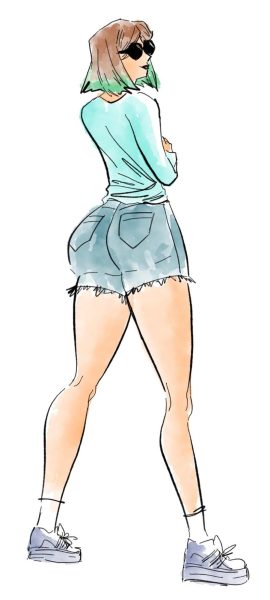 Instagram Hourglass
Instagram Hourglass
In the 2010s, a new fitness craze spread with the assistance of widespread accessible social media, which resulted in the hourglass body type coming to the forefront. While skinniness remained, an interest in working out blossomed, serving as a healthy alternative to drugs and eating disorders. Hourglass body types gain the name from the small waist accompanied by large breasts and a plump rear end. The resurgence of curviness can also be attributed to the black community’s influence on American pop culture. Women like Beyoncé and Nicki Minaj were two of many whose bodies became iconic and constant topics of conversation.
While exercise can change someone’s body, fitness and diet trends continue to sell an unrealistic story to consumers as quick fixes to lose belly fat mislead audiences to this day. You cannot spot reduce fat with a specific workout routine, according to a 2013 study from the Journal of Strength and Conditioning Research. Frustrations were exacerbated by influential people getting cosmetic surgery to obtain the hourglass figure while attributing the changes to exercise and diet.
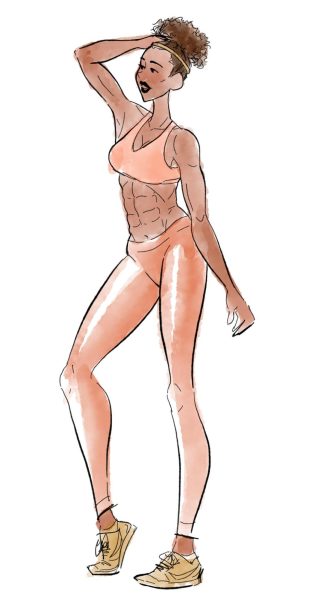
“That Girl” Skinny
In the 2020s, the world was paused by COVID-19 and quarantine-induced cabin fever made way for the repackaged skinny body type with an emphasis on healthy habits dubbed “That Girl.” The fitness craze of the 2010s had a resurgence alongside niche diet trends with an expectation of thinness. Meal prepping, juicing and mat pilates are hobbies that can be done at home and surged in popularity due to stay-at-home orders.
“That Girl” works hard to maintain her physique and shows her toned body in TikTok morning routines. The trend is meant to inspire viewers to pick up healthy routines, but some fear they are a negative influence. Fitness and wellness content does not always motivate viewers and sometimes causes self doubt, explained clinical psychologist and associate professor of psychology at York University Dr. Jennifer Mills. The trend acts as an additional societal pressure for women to adhere to the ideal body type.








